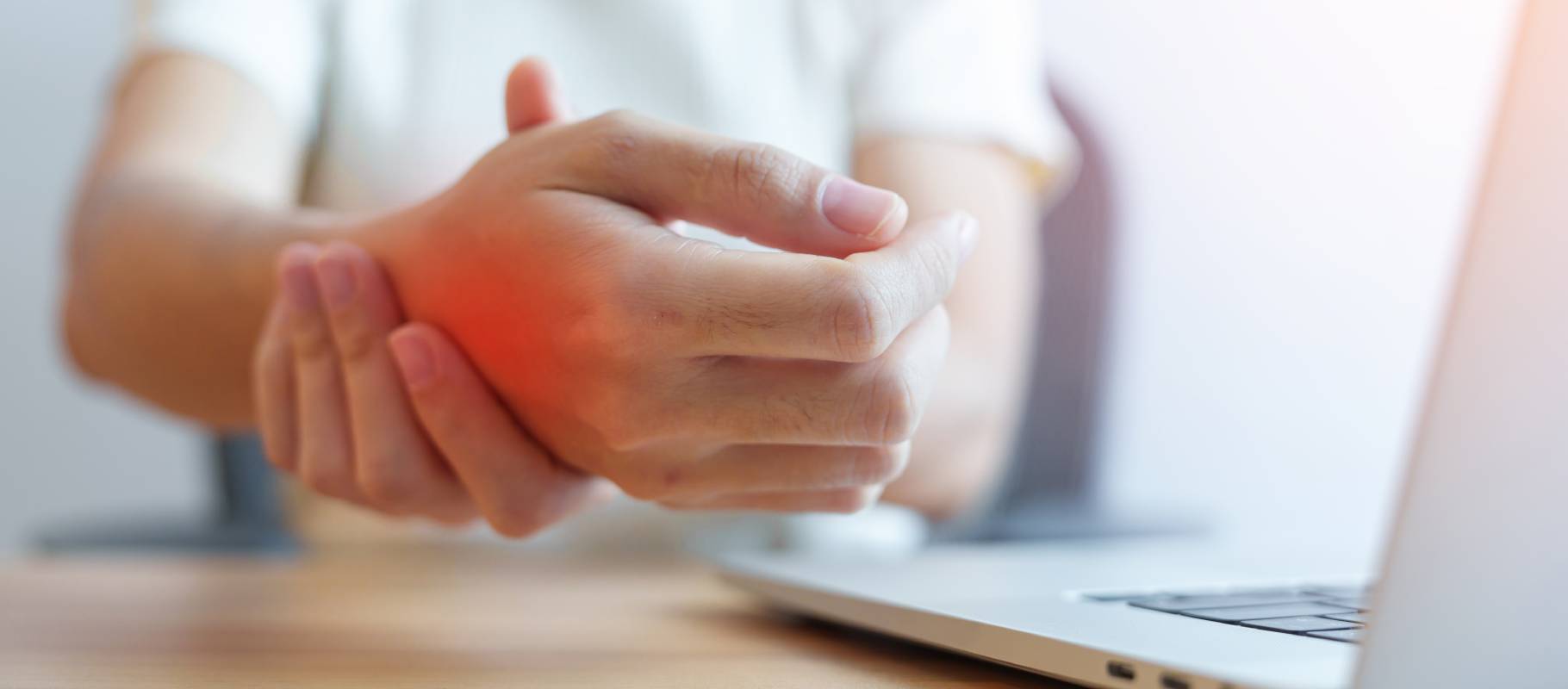De Quervain’s tenosynovitis is one of the most common types of tendon lining inflammation 1. Affecting the tendons of the medial wrist, this condition causes pain when turning the wrist, making a fist, or grasping.
De Quervain’s tenosynovitis specifically impacts the abductor pollicis longus (APL), which helps move the thumb out away from the index finger, and the extensor pollicis brevis (EPB), which straightens the joints of the thumb. These tendons arise from forearm muscles and run together through a sheath that anchors them to the bone as they cross over from the medial wrist into the hand. They are covered in a thin soft-tissue synovium which provides them nutrients and lubricates their movement through the sheath that envelops them. Any swelling of the tendons or thickening of that sheath can result in the tendons no longer fitting well inside the sheath. This can generate friction and pain 2.
Chronic overuse, such as repeating a particular hand motion day after day, may irritate the sheath surrounding the tendons. If the covering becomes irritated, the tendons will thicken and swell, thereby restricting their movement through the sheath that connects them to the base of the thumb. Additional causes of de Quervain tenosynovitis include but are not limited to inflammatory arthritis, such as rheumatoid arthritis, fluid retention, such as from changes in hormones during pregnancy, or direct injury to the wrist or tendon, which may result in scar tissue 3.
Symptoms of de Quervain tenosynovitis include pain and swelling near the base of the thumb as well as difficulty moving the thumb and wrist when grasping or pinching. The pain may extend into the thumb or the forearm if the condition remains untreated; moving the thumb and wrist around may also exacerbate the pain. Untreated, de Quervain tenosynovitis may make it increasingly difficult to properly use the hand and wrist, restricting range of motion and affecting daily activities.
There are a number of risk factors predisposing individuals to de Quervain tenosynovitis. First, people between 30 and 50 years of age have a greater risk of developing de Quervain tenosynovitis than do other individuals. Second, the condition affects women more than men and the condition may in particular be linked to pregnancy. Finally, any activities that involve repetitive hand and wrist motions may be risk factors. This includes frequently lifting a child, which involves using the thumbs as leverage. Those working in a physical job may, depending on what is required of them, also have a higher risk of irritating the tendons involved in de Quervain tenosynovitis.
De Quervain tenosynovitis can be self-limited and may resolve without intervention. However, for individuals with persistent symptoms, systemic anti-inflammatories, corticosteroid injections, and splinting are the most commonly implemented non-surgical treatments 4. It is important to consult a physician in the case of severe pain or dysfunction, especially if an individual has already tried applying cold to the painful area, not using the affected thumb, and taking nonsteroidal anti-inflammatory drugs.
Fifty to eighty percent of patients can be successfully treated non-surgically using splints, nonsteroidal anti-inflammatory drugs, and injections, and the remaining patients typically respond very positively to surgery. Most patients with de Quervain’s tenosynovitis are ultimately relieved of their symptoms.
References
1. De Quervain’s Tenosynovitis: Treatment, Causes & Symptoms. Available at: https://my.clevelandclinic.org/health/diseases/10915-de-quervains-tendinosis. (Accessed: 24th February 2023)
2. Exercise and Bone Health – OrthoInfo – AAOS. Available at: https://orthoinfo.aaos.org/en/staying-healthy/exercise-and-bone-health/. (Accessed: 27th December 2022)
3. De Quervain tenosynovitis – Symptoms and causes – Mayo Clinic. Available at: https://www.mayoclinic.org/diseases-conditions/de-quervain-tenosynovitis/symptoms-causes/syc-20371332. (Accessed: 24th February 2023)
4. Satteson, E. & Tannan, S. C. De Quervain Tenosynovitis. Essentials Phys. Med. Rehabil. Musculoskelet. Disord. Pain, Rehabil. 149–153 (2022). doi:10.1016/B978-0-323-54947-9.00028-6
